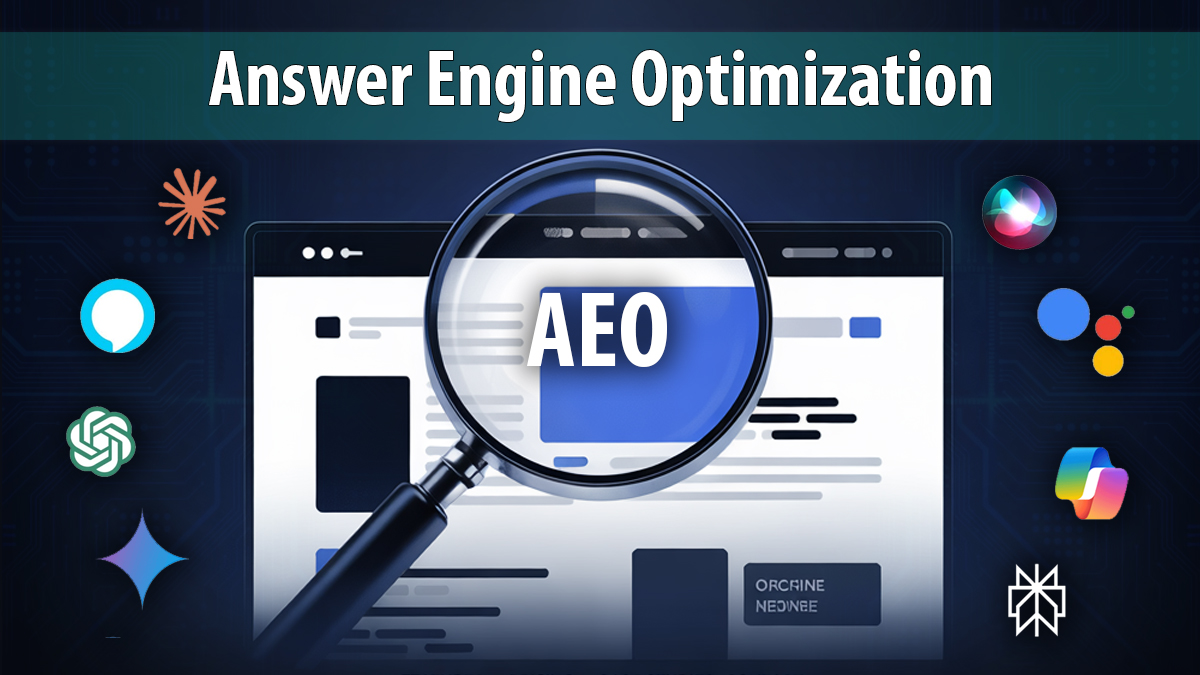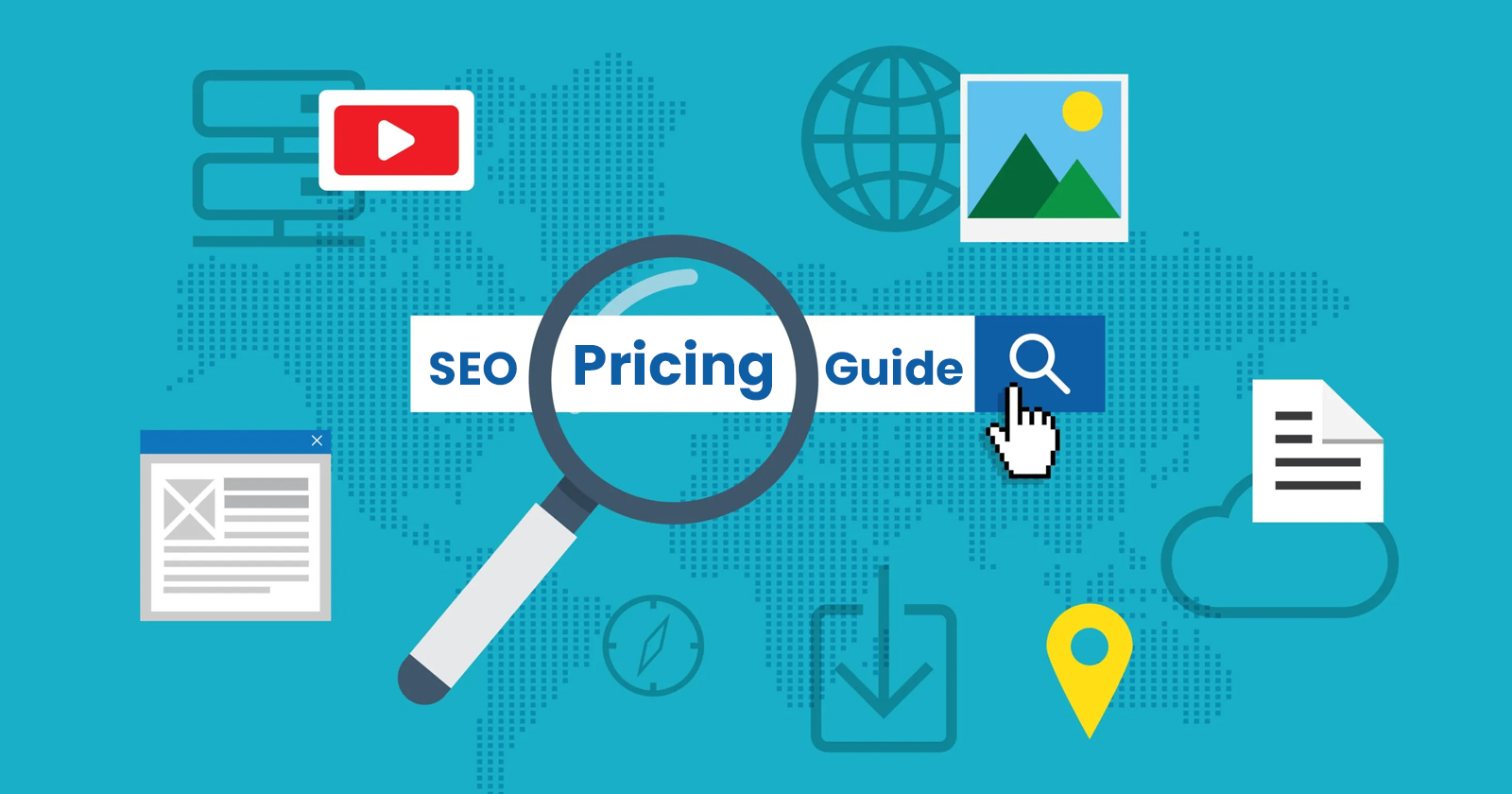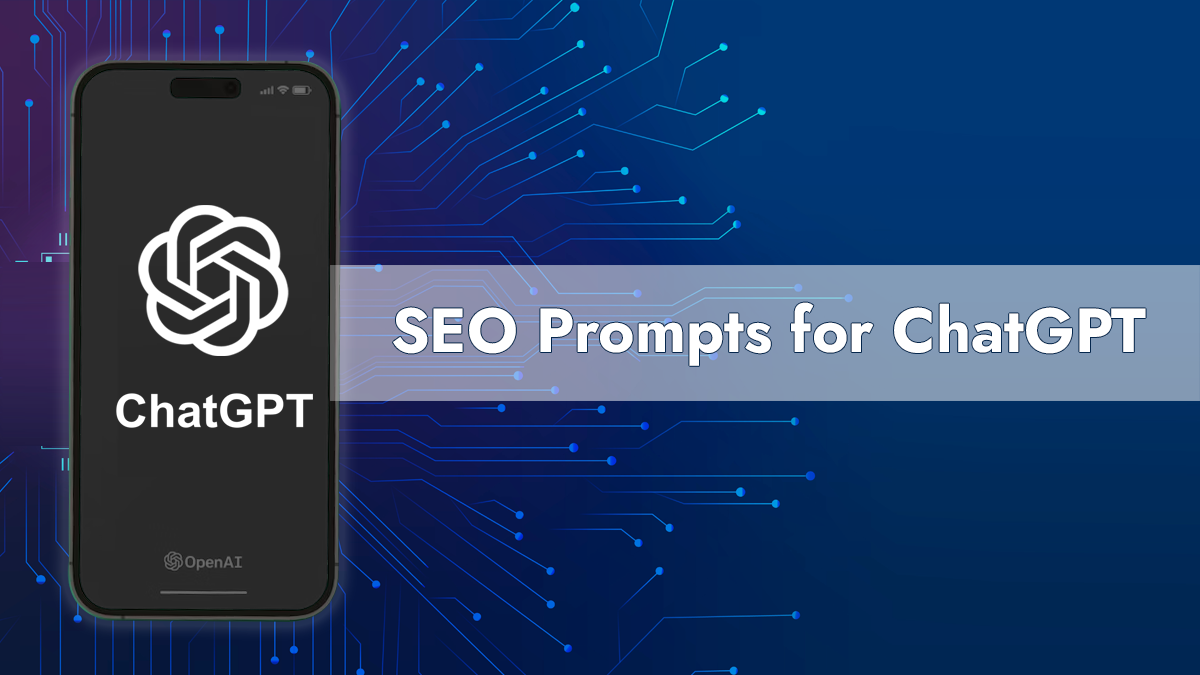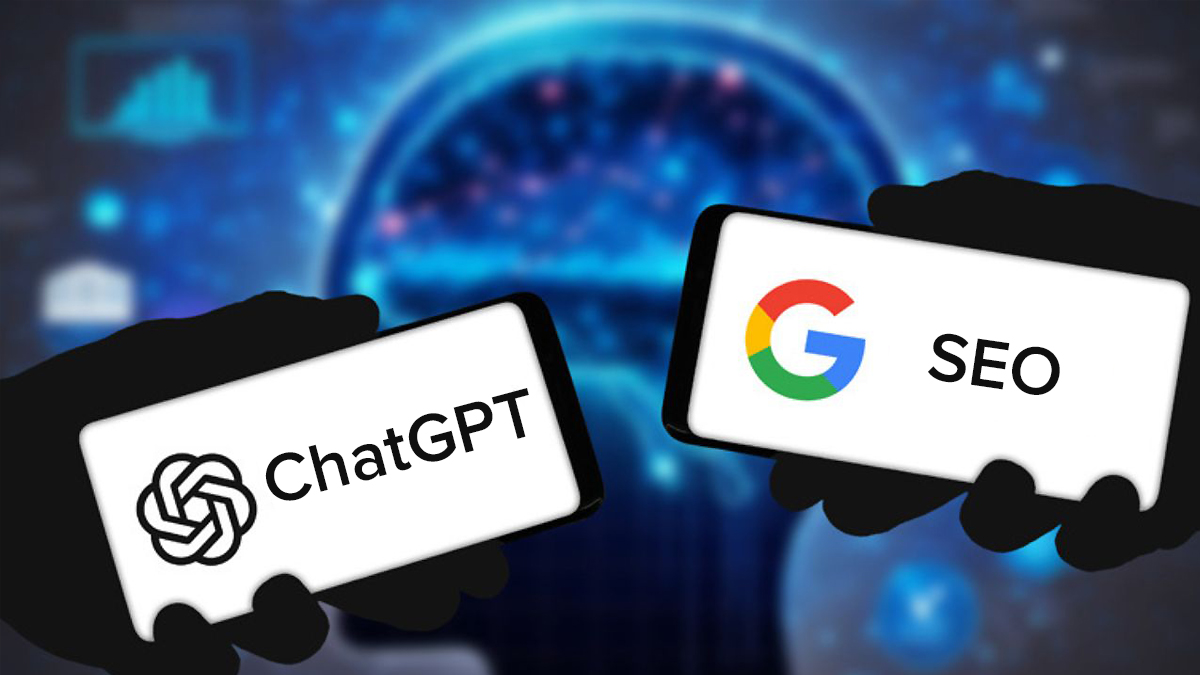In today’s online world, people want quick and correct answers to their questions. They are using generative AI bots like ChatGPT, and voice assistants like Alexa to find these answers. This change in how people search has led to a new type of SEO called Answer Engine Optimization (AEO).
What is Answer Engine Optimization? Unlike regular SEO that looks at rankings and keywords, AEO is about making your content to be chosen as the perfect answer. It should be clear, reliable, and well-organized. As AI language models become more common for users to access the internet, companies and content creators need to understand how to tailor their content for these engines.
By learning how answer engines find, understand, and share information, you can have a strong advantage over your competitors. AEO isn’t just a popular idea, it’s a big change in how people search for and use information on the internet. In this post, we will look at simple steps to help you get noticed, referenced, and trusted by today’s AI platforms.
What is an Answer Engine?
An answer engine uses artificial intelligence and language processing to understand what a user is asking and gives a straightforward answer, so users don’t have to look through many search results.
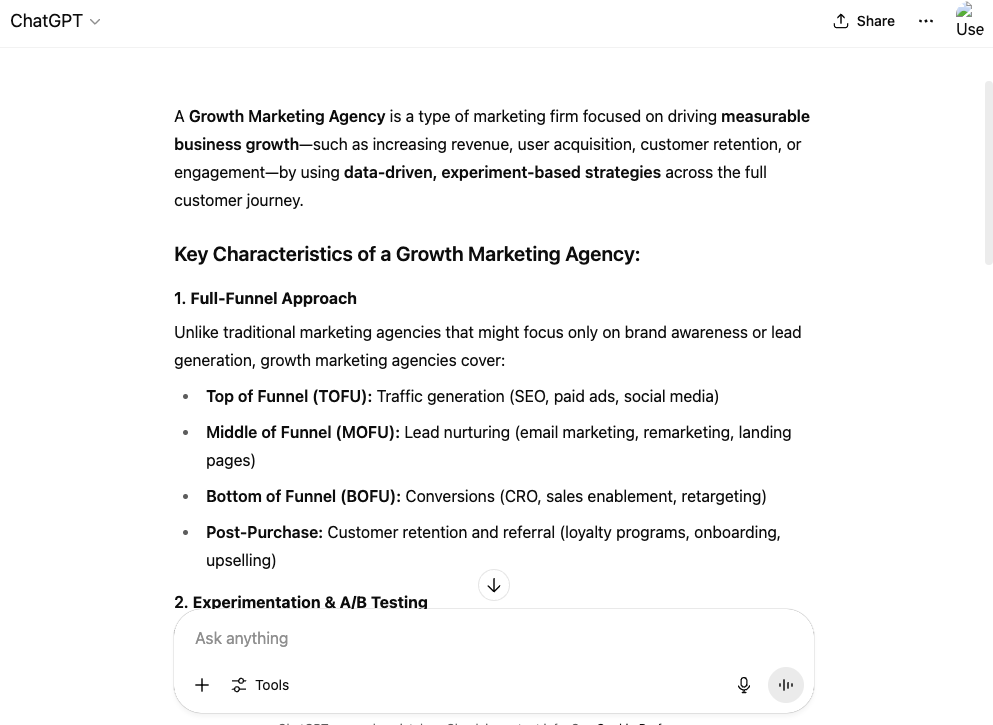
AI SEO services increasingly focus on answer engine optimization, helping content surface in AI-generated answers and conversational search results.
Traditional search engines like Google and Bing show you a list of web pages when you ask something. But, answer engines go further by giving you direct and clear answers to your specific questions without needing to click on anything, and they do it very quickly.
These engines are made to give fast and accurate answers, making them really useful for quickly finding information. If you want to know the weather, the capital city of a country, or the meaning of a word, an answer engine can give you the answer in just a few seconds.
Answer Engine Examples
There are two types of search engines: generative AI bots like ChatGPT and Gemini, and AI voice assistants like Alexa, Siri, and Google Assistant. Gen AI uses advanced algorithms to create answers that sound like a person’s response to questions.
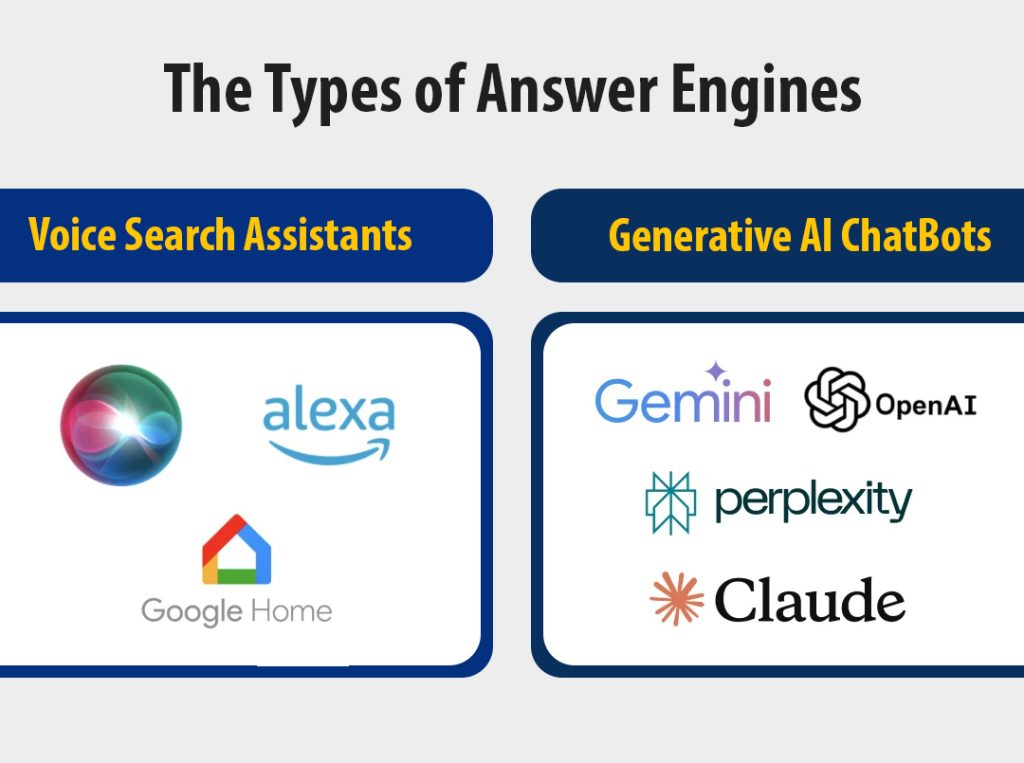
These answer systems are really good at understanding and creating written information, so they are helpful for answering many different questions. Gen AI is becoming more popular because it can understand the situation and have lively conversations, giving detailed and helpful answers.
Voice assistants and AI chatbots are different types of tools. Voice assistants help you by listening and responding to what you say. AI chatbots usually communicate through text and can answer questions or have conversations.
Both can be helpful, but they work in different ways. Open AI launched ChatGPT in November 2022, and it became popular quickly, attracting the attention of researchers, developers, and users.
It became the fastest-growing platform ever, getting 100 million users just two months after it started. It became the best place for people to ask questions and get fast answers to very specific searches.
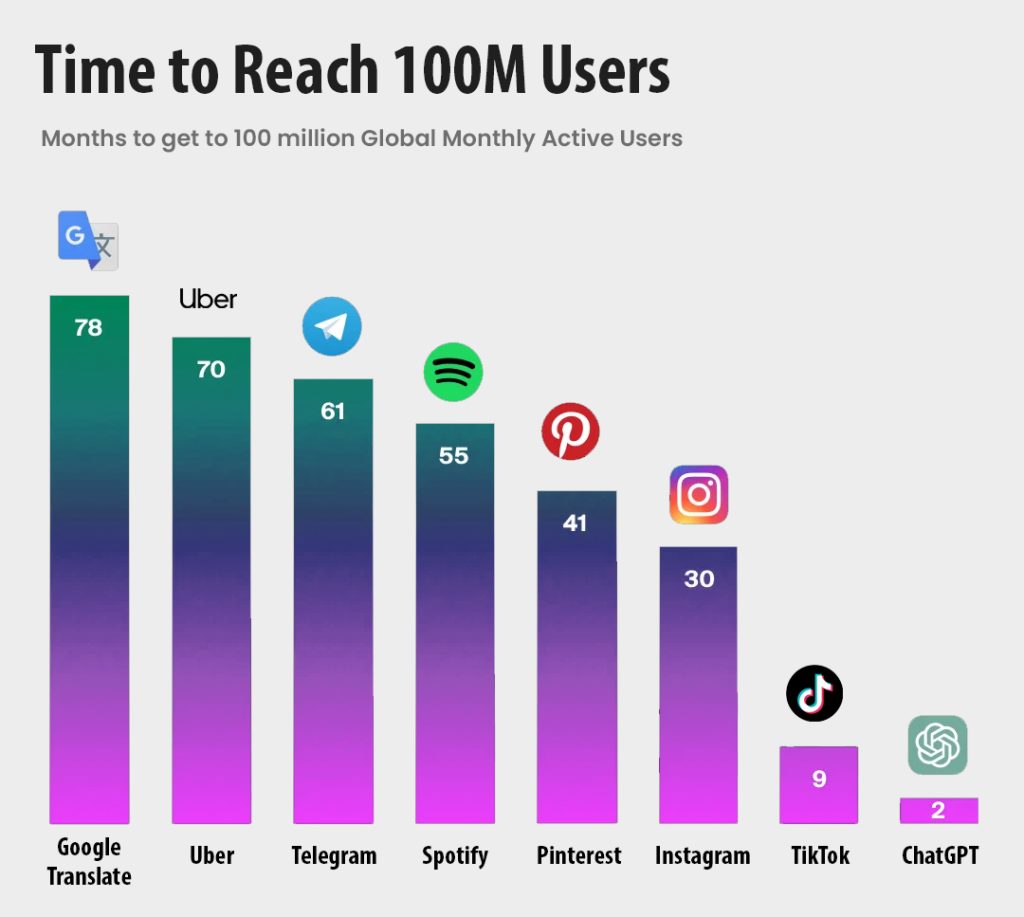
The model can have lively conversations and give clear answers, making it a big improvement in AI technology. Users talk to ChatGPT by typing questions or messages, and they get clear and helpful answers in return.
ChatGPT is good at chatting, but it has some limits. Sometimes, it can give wrong information or create answers that sound real but aren’t true. After ChatGPT did well, Google introduced their competing chatbot, Bard, in March 2023.
Bard worked like ChatGPT, but the main difference was that Bard got its information from the internet. Bard was a brand-new idea created quickly because there was a need to compete with ChatGPT.
But it was run by Google’s Language Model for Dialogue Applications (LaMDA), which was introduced two years earlier. In February 2024, Google changed the name of Bard to Gemini to make their different AI tools easier to understand and showed that they are changing how they work.
The change to Bard wasn’t just a new name; it was also meant to make the AI better at processing information. This new algorithm looks at whole sentences and helps to understand the meaning and details in language better.
What are Voice Search Assistants that Use AI?
Another kind of answer engine different from chatbots is voice search assistants that use AI. These answer engines use speech recognition to understand spoken questions and give quick answers.
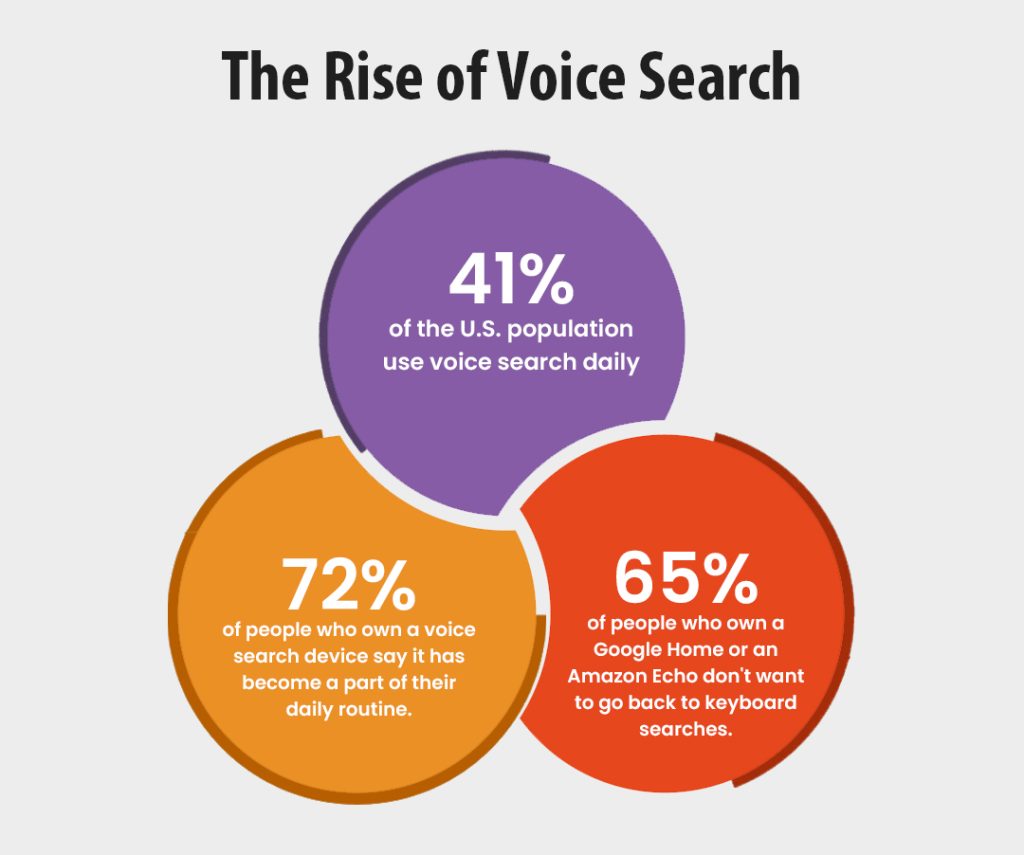
Users can just use their voice to ask questions, find directions, set reminders, and do different tasks without needing to touch a screen. Voice search assistants give quick answers and make it easy for people who like to find info without using their hands.
As these assistants keep getting better, they become a key part of our daily lives, easily fitting into our homes, smartphones, and other smart gadgets. Unlike the new Gen AI chatbots, these are already commonly used in people’s everyday lives, with 41% of people in the US using voice search every day.
Additionally, 72% of people with a voice search device say they use it every day, and 65% of those with a Google Home or Amazon Echo prefer it over using a keyboard for searching.
Voice search is becoming an important part of how people use technology every day. This means that marketers need to learn how to improve their content to do well.
Search Engines to Answer Engines Transition
The shift from regular search engines to answer engines is a big step in how we look for and gather information. Search engines have been the main tools for finding web pages by typing in keywords, but now answer engines have changed how we find information.
This change is due to improvements in artificial intelligence and natural language processing. These technologies help answer engines better understand questions and give clear and correct answers to specific inquiries.
One of the main reasons for this change is the growing need for quick and accurate information. Traditional search engines show users a list of related web pages. Users have to check different sites to find the answer they want.
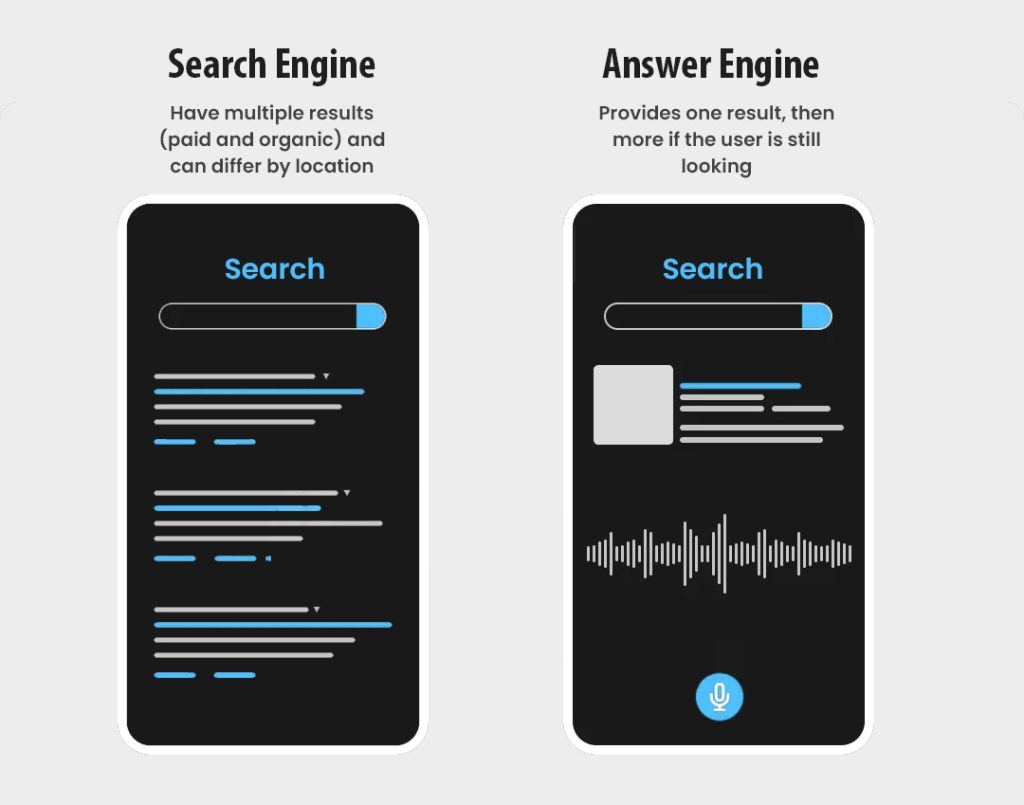
This process can take a lot of time and usually makes the user read through long articles or websites quickly. Answer engines use AI to understand what the user is asking, find useful information, and give a short answer.
This makes searching easier by giving users the information they want quickly, so they don’t have to go through a lot of search results. People are getting more impatient, and search engines are working hard to provide faster and more accurate information.
The growth of voice technology has greatly contributed to the increase of answer engines. Voice assistants like Alexa, Siri, and Google Assistant make it easy to ask questions and get quick answers.
What is Answer Engine Optimization?
Answer engine optimization is about improving content so that it gives clear answers to questions without users having to click anything. This can be on a chatbot like Gemini or ChatGPT that uses Generative AI, search results on websites like Google or Bing, or voice search tools like Alexa or Siri.
AEO is the process of improving big language models (LLMs) and adjusting their training and feedback to make sure your brand shows up in the right places at the right times. AEO is like a newer version of search engine optimization.
Both focus on understanding what a user is looking for and how to provide the best answers. AEO and SEO both aim to give helpful information that answers people’s questions clearly and briefly.
However, AEO focuses on making content that directly answers a question, making it easy to read and understand for AI tools and voice search assistants.
Also Read: Perplexity SEO-How to Rank in Perplexity Answers
How is SEO Different from AEO?
SEO and AEO are two different ways to improve content for search engines, and each has its own goals and focuses. SEO is mainly about making a website more visible and helping it rank higher on results pages.
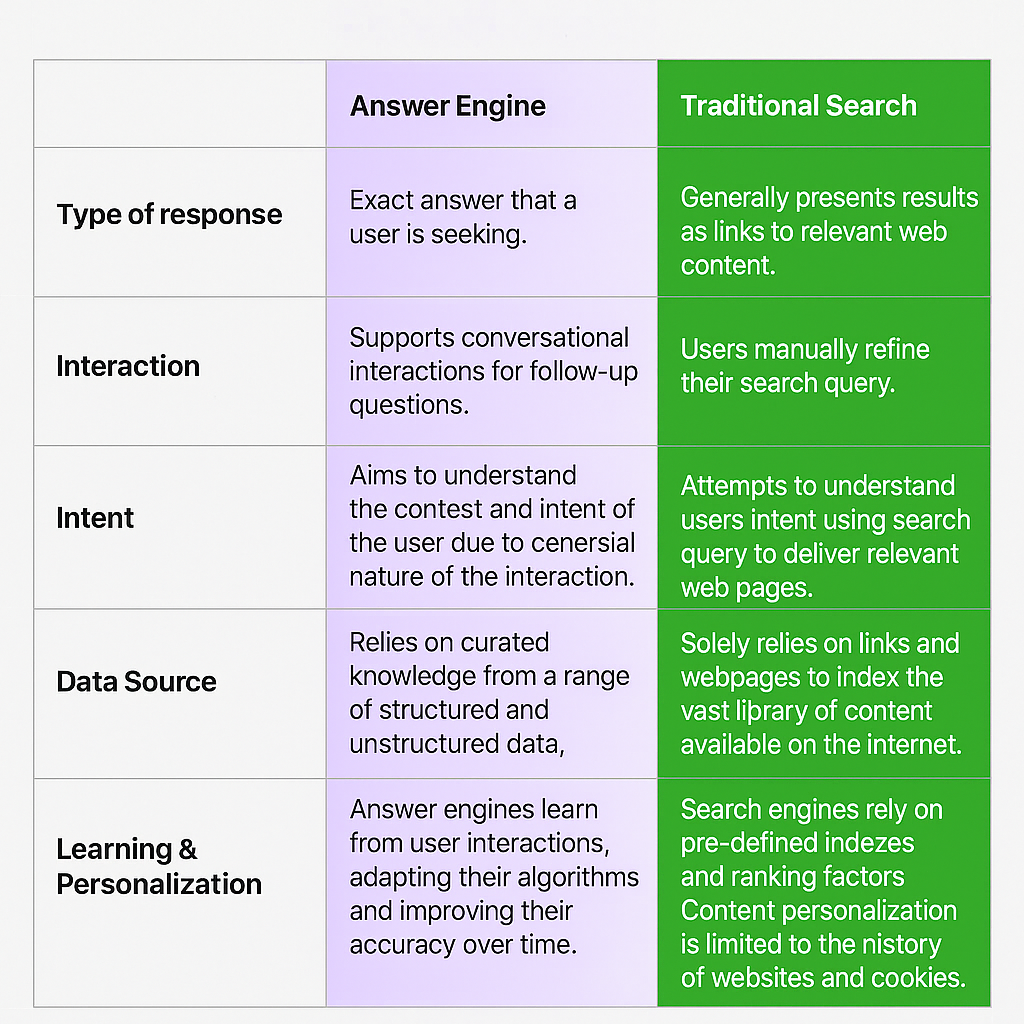
It means improving different parts of a website, like using the right keywords, making special pieces of content stand out, adding organized data, getting links from other sites, and arranging the site well, to help it show up higher in results pages.
SEO is about getting free visitors by creating helpful content that answers what people are searching for, which helps make the website more visible and brings more visitors to it. On the other hand, AEO is a more focused method that is designed for answer engines or AI systems that give users direct answers to their questions.
AEO is all about making content that clearly and quickly answers specific questions. It means figuring out what users want, organizing content clearly, and using simple language that AI tools like ChatGPT or Gemini can easily read and understand.
AEO wants to make content easy to find and display it clearly on platforms where people look for answers to their questions. A search engine helps you look for information, while an answer engine gives you the information right away.
SEO and AEO both aim to help websites show up better online and bring in the right visitors, but they do this in different ways and focus on different platforms. SEO strategy is more general and focuses on getting higher rankings on traditional search engines.
AEO, on the other hand, is more specific and aims to directly answer user questions for answer engines. Using SEO and AEO marketing strategies can help businesses improve their content for more search platforms and meet different user needs when looking for information.
How to Optimize Your Business for Answer Engines?
As answer engines become more popular, brands and marketers need to learn how to improve and shape the results from these engines. You can start by finding out where the data comes from, learning about it, and trying to influence those sources that these engines use for training.
AEO makes sure the information you share is easy to find and can be used to teach answer engines, which helps you influence their results. This is where building a community and content created by users is really important.
Content that others approve of can be a main source for answer engines to get their information. To understand what Gen e AI thinks is a good answer, it’s helpful to put the questions that your audience often asks into the platforms they use for asking questions.
By examining the answers you get, you can build your content in a way that matches what users expect. To make your content better and more valuable, you can give it a special viewpoint that represents your brand.
You can also add something extra that makes your business different. This method makes sure that your content answers what users are looking for and also shows what makes your brand unique.
Also Read: What Is Generative Engine Optimization – What is it and How is it Different from SEO?
Actionable Steps for Performing Answer Engine Optimization
Step 1: Find Out Where AI Language Models Get Their Training Data From
To perform AEO, it’s important to know where AI language models get their training information from. These models usually learn from a lot of different public data sources, such as websites like Wikipedia, government documents, online discussions, news stories, research papers, and other accessible content on the web.
They can’t see special or restricted content unless they have permission to use it or it is shared with them. As a brand or content creator, you should aim to help these open-source communities by sharing information that is true, organized, and easy to grasp.
If you make your content similar to what AI systems learn from, it’s more likely that these systems will mention or summarize your content. Make helpful blog posts, FAQs, glossaries, and lasting how-to guides that are similar to popular public information sources.
Step 2: Make a Good “About Us” Page
A good “About Us” page is very important for building trust and credibility, which are both essential for effective answer engine optimization. When AI language models look at how trustworthy a website is, knowing who created the content is very important.
This page should have a short overview of your organization, what it aims to do, who is on the team, and their qualifications. Add links to news articles, industry connections, partnerships, or awards to boost trust.
If you create content by yourself, talk about your background, your experiences, and what you are good at. AEO relies a lot on clear and reliable information. If the About page is unclear or missing, it can be suspicious to search engines and AI.
Step 3: Build Your Reputation by Getting Mentioned in the News, Review Websites, and Award Pages
Reputability is an important way that AI systems and search engines decide if content is reliable and trustworthy. To improve this, try to get mentioned on websites that AI frequently uses, like news sites, review sites, award lists, and trustworthy discussion boards.
These outside signals help show that your brand is trustworthy and reliable. Getting mentioned in news articles, writing guest posts, joining industry events, or applying for awards can all help improve your online presence.
AI language models often rely a lot on outside information when choosing answers to people’s questions. Make sure to create and update your profiles on review websites like Google Business, Trustpilot, G2, or other important sites for your industry.
Step 4: Make Sure Your Content Can be Easily Crawled by AIs
To show up in answer engine results, your content needs to be easy for AI to find and understand. This means staying away from problems that make it hard to access a website, like messy code, too much JavaScript, or content that’s only available after logging in or through pop-up ads.
Make sure crawlers can index your website and that it follows SEO rules, like having simple web addresses, loading quickly, and working well on mobile devices. The most important thing is to use schema markup to describe important parts like FAQs, products, articles, and reviews.
This helps AI understand what your content is about and show it as a clear answer. Using the same format, correct headings, and bullet points can make it easier for AI to understand the information. Being clear and organized is more important than being fancy.
Step 5: Design Your Content Structure as Per the Questions that Your Audience Usually Wants to Know
A good way to optimize for AEO is to create content based on the information your audience wants to know. Tools like Google’s People Also Ask, AnswerThePublic, and keyword research websites can help find these questions.
Once you know the questions, use search engines or AI chatbots to find the answers and see how they are presented. Are the answers in bullet points? Do they provide definitions, comparisons, step-by-step instructions, or lists?
Use that information to format your content in a similar way. Begin each section with the exact question and then answer it clearly and briefly in the first paragraph. This increases the chances of being chosen as a featured snippet or direct answer by AI.
Final Thoughts
Answer engine optimization is the next step in improving how easily people can find you online. As AI is now the main way people find information, just being listed on search engines isn’t enough anymore, you need to provide the answer.
When you make your content match how AI understands and finds information, you are more likely to be shown in voice searches, smart assistants, chatbots, and AI responses. AEO combines smart technical plans with clear content and trust-building.
It helps you create a good reputation, make your site easy for answer engines to find, and adjust your content based on actual questions from users. The future of online searching will be more like having a conversation.
FAQs
Why is AEO important in 2025?
In 2025, people are quickly changing how they get information. More people are asking questions directly to AI tools like ChatGPT, using voice search on smart devices, or looking at quick answers in featured snippets. This means people will click on regular web pages less and depend more on fast answers from AI. Without AEO, your content might not be noticed in this new setting.
How do AI engines find information to answer questions?
AI systems and answer engines use information from publicly available and easy-to-find sources that have good quality. These include websites, information sources, organized data, Wikipedia, government databases, forums like Reddit and Stack Overflow, and news websites. Content that is neatly arranged, has a clear format, and is easy to scan is more likely to be used. AI models learn from these sources while they are being trained to recognize patterns and formats.
Can small websites compete in AEO?
AEO is one of the few online strategies that allows small websites to do better than bigger ones. AI and search engines focus more on how good and clear the answer is, rather than just how famous the website is. If your content gives a clear, organized, and reliable answer to a specific question, it is likely to be chosen, even if it’s from a less well-known site. This makes things fairer and gives small businesses a great chance to be noticed in AI-driven results.
How can I tell if my content is being used by Ai engines?
There are some ways to check how well you are doing with AEO. Use online SEO tools to check if your pages are showing up in featured snippets. Test voice assistants by asking them questions about your topic. You can check how visible you are by asking questions using tools like ChatGPT, Perplexity.ai, or Bing Chat to see if your content or brand comes up.
What kind of content works best for AEO?
The best content for AEO is organized, helpful, and focused on answering specific questions that users have. Formats such as FAQs, guides on how to do things, definitions, product comparisons, and step-by-step instructions usually do well. Using lists, bullet points, and clear steps helps AI systems understand your content better and use it as a guide. Try to fully explore your topic by providing clear and helpful answers that are short but informative.
